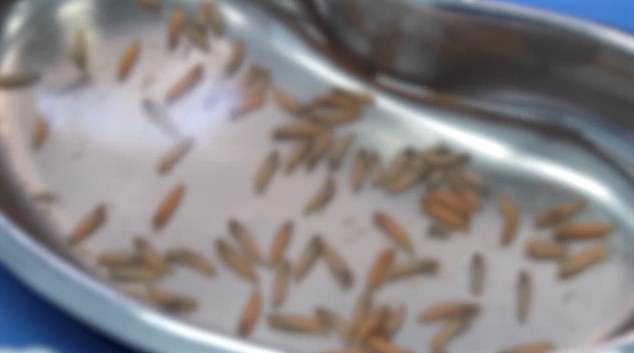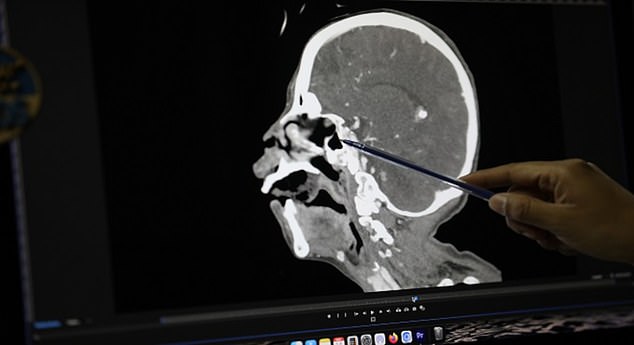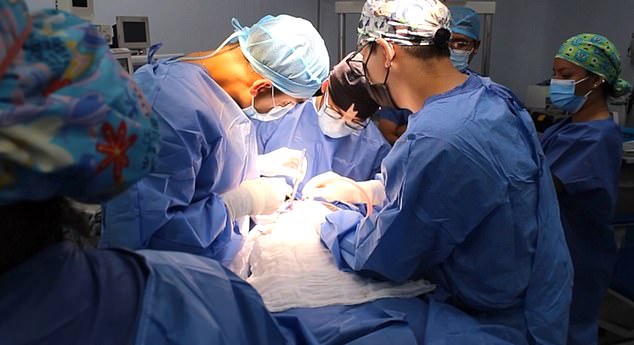A team of shocked doctors removed 150 maggots from a woman’s mouth that had appeared after a dental procedure left her with rotten tissue.
The 40-year-old patient, whose name was not revealed, went to the EsSalud Alberto Sabogal Sologuren Hospital in Callao, Peru, with unbearable pain in his mouth.
I had no idea that it was caused by the worms that had settled there.
Doctors at the hospital explained that the condition is called oral myiasis, a very serious health problem caused by the infestation of larvae in dead tissue.
She was prepped for immediate surgery on May 14 to get rid of the worms and prevent the infection from spreading further.
A team of shocked doctors removed 150 maggots from a woman’s mouth that had appeared after a dental procedure that left her with rotten tissue.

Blurry video footage (pictured) shows countless maggots floating in a small tub of water after they were removed from the woman’s mouth.
Dr. Renzo Paredes, a maxillofacial and oral surgeon in the hospital’s dental service, said the patient reported that her symptoms began after undergoing dental treatment elsewhere that left her with dead tissue in her mouth.
He and his team managed to remove all the larvae, cleaned out the necrotic tissue, and then closed the wounds.
Video footage shows the countless maggots floating in a small tub of water after they were removed from the woman’s mouth.
Dr Paredes said: “In total, 150 worms were removed from the oral cavity due to myiasis, which usually occurs in other parts of the body.
‘It occurs when there are necrotic tissues; that is, dead tissues that occur in people with limited mobility, psychomotor or psychiatric history, and poor hygiene.’
After the procedure, the patient was discharged and the family members who accompanied the woman to the hospital thanked the doctors.

Doctors at the hospital explained that the condition is called oral myiasis, a very serious health problem caused by the infestation of larvae in dead tissue.
Dr. María Aguilar Del Águila, executive president of EsSalud, also praised the rapid medical response and urged policyholders to periodically visit health centers for any health problems that arise.
Oral myiasis is a type of infection caused by fly larvae, associated with pre-existing lesions and inadequate oral hygiene, appearing more frequently in elderly patients or those with high psychomotor dependence that facilitates infestation.
Its geographical distribution is variable but is linked to warm and humid climates.
Predisposing factors include low sociocultural level, insufficient environmental and personal hygiene and various pre-existing pathologies.

